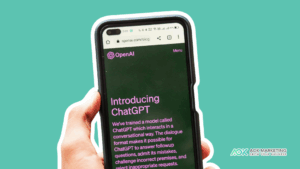Are you looking for a way to reach potential customers, nurture leads and increase sales?
If so, drip campaigns may be the answer.
Drip campaigns are automated email sequences that send messages on a pre-defined schedule based on user interactions with your website or other marketing channels.
They allow you to provide timely content to prospects at different stages of their customer journey, helping move them closer to becoming paying customers.
In this article, we’ll discuss how drip campaigns work and how they can help you better engage with prospects and convert more leads into paying customers.
What Are Drip Campaigns?
A drip campaign is an automated sequence of emails triggered by a user’s interaction with your website or other marketing channels.
For example, if someone signs up to receive your newsletter, they may automatically be enrolled in a welcome email series that provides helpful information about your company and products.
Drip campaigns are designed to nurture leads over time and move them further down the sales funnel. By providing valuable content, businesses can build relationships with prospects and increase their chances of converting them into customers.
In addition to welcome emails, you may use drip campaigns to send upsells or cross-sells, thank you messages after purchases, re-engagement campaigns to win back inactive customers, and more.
Drip campaigns are a great way to keep prospects engaged and build trust with your brand while driving conversions and sales. Email automation can be an effective tool in any digital marketing arsenal with the right strategy.
Why use drip campaigns?
Drip campaigns provide a personalized, automated way to engage with prospects or existing customers. With the right strategy, you can nurture relationships and send relevant content that resonates with each user.
Drip campaigns are also great for staying in mind with prospects who may not be ready to purchase. By providing helpful resources, businesses can educate their audience while building trust and credibility.
Drip campaigns increase engagement, drive conversions, and build relationships with your target audience. Businesses can leverage email automation to maximize their marketing ROI with the right strategy and setup.
Examples of Drip Campaigns
Drip campaigns can be used for various purposes, from welcoming new subscribers to engaging inactive customers. Here are some examples of drip campaigns you can use:
Welcome email series: Send an automated series of emails when someone signs up to receive your newsletter. This is a great way to introduce prospects to your brand, share your mission, and highlight the key benefits of your product or service.
Re-engagement campaign: Reach out to inactive customers with messages encouraging them to return and shop with you again. You can include helpful reminders about special offers or content that may be relevant to them.
Upsell/Cross-sell campaign: Reach out to existing customers with messages that include product or service upgrades and additional items that can complement what they already have.
Nurture/Educational Series: Send emails sharing helpful tips, resources, and other content related to your industry niche. This is a great way to deepen relationships with leads and provide value before asking them to make a purchase.
Shopping Cart Abandonment: Send follow-up emails to customers who have left items in their shopping cart without completing the checkout process. These emails can encourage them to complete their purchase and remind them of any incentives (like free shipping) that may be available.
Lead Qualification Series: Identify leads interested in your product or service and send them emails that help you qualify them further. This can help focus your efforts on prospects likely to convert into paying customers.
Regardless of what type of drip campaign you decide to run, the key is ensuring your content is relevant and useful. This will help you maximize the impact of your campaigns and increase engagement with potential customers.
The Benefits of Using Drip Campaigns
Drip campaigns offer several benefits, making them an attractive option for any digital marketer.
First, they are highly targeted and personalized. You can segment your audience based on past behavior or other criteria to send relevant content that resonates with each user.
Second, drip campaigns are incredibly cost-effective. You can create a drip campaign with minimal resources and effort, saving money while achieving your desired results.
Third, they are easy to set up and manage. All you need is an email marketing platform like MailChimp or Constant Contact to configure the automation of your campaigns.
Fourth, drip campaigns are an excellent way to nurture leads and keep them engaged with your brand. You can use them to send timely content, offers, discounts, or other incentives to drive customer conversion.
Finally, drip campaigns are incredibly effective for building relationships with customers. By sending personalized content that speaks directly to their interests, you create a lasting connection that increases loyalty over time.
In short, drip campaigns are an efficient and effective way to reach your audience and grow your business. You can create engaging content that resonates with each user and drives conversions with a few simple steps.
Try out a drip campaign today and take advantage of all its wonderful benefits!
Crafting Your Drip Campaign Strategy
Once you decide to use drip campaigns, developing a solid strategy is next.
First, think about your goals for the campaign. Are you hoping to capture more leads? Increase engagement? Drive more sales? Knowing why you’re sending emails will help you craft the right messages and content.
Next, decide what type of content and messaging you’ll send. Will you focus on educating customers? Sharing interesting facts? Offering promotions? These factors help determine the types of emails included in your campaign.
You’ll also need to consider how often to send out emails. Too many emails can be off-putting, while insufficient emails can hurt engagement. Strike a balance with the frequency of your emails and ensure you provide value in every single one.
Finally, track and measure your campaigns’ performance. Keeping tabs on open rates, click-throughs, unsubscribed, and other key metrics will help you refine the content of your emails and ensure you’re providing value to your customers.
With the right strategy, drip campaigns can help you reach your goals, increase engagement, and establish customer relationships. So get started crafting your effective drip campaign today!
Analyzing the Performance of Your Drip Campaigns
Once your drip campaigns are up and running, tracking and measuring their performance is important.
Start by setting benchmarks for success before you launch. What open rates, click-throughs, or conversions do you want to see? This will help you gauge the effectiveness of your campaigns once they start rolling out.
Analyze your drip campaign metrics regularly to ensure you achieve the desired results.
Review your open rates, click-throughs, and conversions compared to industry standards and track changes over time. Also, consider segmenting your campaigns by customer type or product category to better measure performance.
Make sure to look at more than just the core metrics. Look at customer engagement, loyalty, and conversion rate as well. Note any patterns or trends to help you adjust future campaigns accordingly.
Finally, be sure to review your results for opportunities for improvement. Test different formats, subject lines, and offers to see what resonates best with your customers so that each campaign brings maximum value.
Ultimately, tracking and analyzing the performance of your drip campaigns is key to gaining insights that help you create more successful campaigns in the future. With continuous optimization, you can ensure each campaign reaches its fullest potential.
Key Performance Indicators (KPI)
KPIs are key performance indicators that measure a company’s success in achieving its goals. In drip campaigns, some of the most important KPIs to track include open rate, click-through rate, conversion rate, customer engagement, and loyalty.
Open rate is an important KPI that measures the number of emails that were opened compared to the number of emails sent. Click-through rate is another KPI that measures how many people clicked on a link in an email compared to the total number of emails delivered. Conversion rate tracks how many people took action after receiving an email and completed a desired goal or task, like signing up for your newsletter or making a purchase.
Customer engagement and loyalty are also important KPIs to track, as they give insight into how your customers interact with your company and its services. Tracking these KPIs over time can gain valuable insights that help you refine and optimize future campaigns.
Final Thoughts
Drip campaigns can be an incredibly effective tool for engaging customers and driving conversions. Though they require careful planning and strategy, with the right content, timing, and tracking, you can create powerful campaigns that increase customer loyalty and bring your business more success.
So start crafting your drip campaign today! You can create content that resonates with customers and drives the desired results with simple steps. Benefits include increased customer loyalty, more conversions, and more success for your business.
Good luck!
About The Author
Rehj
With over 15 years of experience in copywriting, Rehj has established a reputation as a highly skilled and talented wordsmith. Rehj has honed their craft throughout her career, consistently producing top-quality content for various audiences and industries.
Her ability to understand their target audience, craft compelling narratives, and write in a style that resonates with their audience has made them a sought-after copywriter in their field. Rehj’s passion for writing and commitment to producing top-notch content has driven their success and established them as a trusted voice in copywriting.






